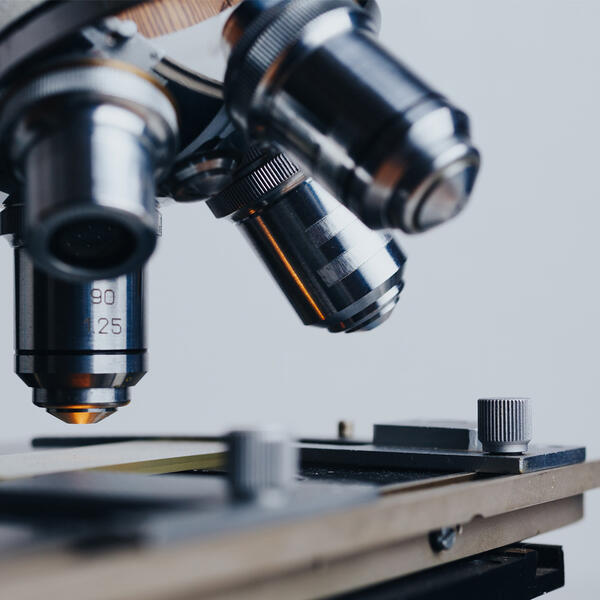Story
WADA education – helping athletes who want to compete clean


The World Anti-Doping Agency (WADA) is pleased to introduce ‘Spotlight’, a new communications tool that aims to inform stakeholders of the daily activities being carried out around the globe by the WADA team and its partners to deliver on Clean Sport. In this issue, we look at the priority area of education and how it fits into the broader anti-doping landscape.
Under the World Anti-Doping Code (Code), education is designed to preserve the spirit of sport from being undermined with the objective of preventing intentional or unintentional use of prohibited substances and methods. In line with this, WADA’s Education Department supports athletes that want to train and compete clean. In short, the Department aims to increase access to education and information programs worldwide for athletes and their support personnel; and, provides support, guidance and tools for athletes and stakeholders to help them create and implement education programs. Clean Sport education:
- is fundamentally based on the principle that athletes start in sport clean and that most athletes want to remain clean;
- is underpinned by social science research that helps us understand the complexities of doping behavior and supports our decision making;
- is a core component of any anti-doping program; and
- will be strengthened via the 2021 World Anti-Doping Code review; in particular, through the introduction of a new International Standard for Education.

WADA's Education Team. From left to right: Tony Cunningham, Senior Manager; Amanda Hudson, Director and Kangeun Lee, Manager.
Stakeholder call for increased research-led education
At WADA’s March 2019 Annual Symposium in Lausanne, Switzerland, stakeholders from the anti-doping community were asked to select which of WADA’s strategic priorities they believed would have the most positive impact on the global anti-doping program. The number-one answer was to ‘increase research-led education’.
This may come as a surprise to some given the higher public profile of other areas of the anti-doping program. The public focus, and indeed the anti-doping community itself, has tended towards catching cheats, which begs the question: what happens when virtually the only narrative around anti-doping is about those who have been caught doping versus those that compete clean?
Is it time to change the lens by which we view anti-doping? Should we focus more on the protection of clean sport and the majority of sports people out there doing their best to navigate the anti-doping system and the rules?
WADA’s new Director of Education, Amanda Hudson, said: “The global anti-doping movement is shifting. It is recognizing that the majority of stakeholders in sport are trying to do the right thing and that as an anti-doping community we must do more to help and promote them. Our efforts to preserve the spirt of sport from the outset must significantly increase. Education plays a fundamental role in this. It gives athletes and those involved in sport the opportunity to learn about clean sport, its importance and the role they play in maintaining and protecting it.”
“It is likely clear to most people that doping is cheating, steroids are banned and athletes can be tested. However, what is possibly not so clear to all is the complexity of the anti-doping system, i.e.: the ten different types of Anti-Doping Rule Violations (far more than simply failing a urine test); the regulation required to harmonize anti-doping globally -- not just the Code but also the UNESCO International Convention against Doping in Sport; and, the simple fact that there are many substances banned in sport, some of which can be found in everyday over-the-counter medications. Equally, and very importantly, helping those bound by anti-doping rules to understand them; as well as, their rights and responsibilities is something WADA and our stakeholders must continue to commit to.”
Balancing deterring/detecting and preserving/protecting
The development of the global anti-doping program is a very positive story. The idea that, within 20 years of WADA’s creation, a global harmonized anti-doping program has been implemented in almost every country and sport in the world is a phenomenal achievement for any industry or health discipline.
The underlining ethos for most of this time has been one of deterrence and detection, an approach that is an essential part of the anti-doping eco-system. However, as our understanding has increased through research, we recognize that simply deterring and detecting is not enough. Like healthcare, we must not simply detect illnesses and try to deal with them without also focusing on: prevention; early development of healthy behaviors; understanding who is more at risk and why; etc. All are essential to protect health. And so, like health, the anti-doping community continues to increase its prevention efforts, addressing the balance between deterring/detecting and preserving/protecting. Education and the promotion of clean sport behaviors are clearly integral to the system.
International Standard for Education will enable a big boost for Clean Sport
Understanding the complexity of doping behavior and what drives athletes’ decision making is key to all parts of the anti-doping system. As such, much of the challenge to improving the understanding of anti-doping by stakeholders lies in improved education, not just of athletes, but of the support networks around them and importantly of those working in the anti-doping system itself. 1 January 2021 will see a significant reinforcement of education in the proposed 2021 Code; and, perhaps most significant of all, introduction of a new International Standard for Education. This Standard will enable stakeholders to consider those in their sporting landscape who would benefit from education; plan how to reach them; provide education opportunities for them to access; and, then engage to gather feedback for improvements.
This new Standard recognizes that each Anti-Doping Organization will need to prioritize and deliver within their means; and, in some cases, rely on other tools such as WADA’s education materials to assist them. WADA, through its Anti-Doping e-Learning platform (ADeL), has education programs designed for core target audiences; such as: athletes, coaches, medical professionals and parents; as well as, additional resources for personnel leading anti-doping programs and university students. This means that as we enter a new phase of the Code, there should be a strong commitment to provide educational opportunities for those who require them and very little reason not to. “WADA invests in its ADeL platform and other tools because we believe that athletes and those around the athlete must have the opportunity to learn about clean sport and the anti-doping regulations,” said Kangeun Lee, Manager, Education. “We are committed to helping our stakeholders meet every athlete’s right to education as part of a balanced anti-doping program.”
What the research is telling us
So, what difference will this make? We know from a Leeds Beckett research project, which was published by WADA in 2016, that research indicated reasonably broad knowledge of what doping was about among parents, coaches, trainers and medical professionals – collectively known as “athlete support personnel”.
The report also highlighted a significant minority that said that they might encourage athletes to dope “if they were convinced that it would help their athletes and have no negative health implications”. This insight shows us that there is still a long way to go before all involved in sport have the relevant, in-depth knowledge required to prevent both intentional and unintentional doping, and that only a planned and focused effort can change this over the long-term.
In terms of addressing this, Tony Cunningham, Senior Manager, Education and WADA’s lead for Social Science research, stated: “A first important step is a simple change in perspective rather than a paradigm shift. Acknowledging that any prevention system must have detection and deterrence; and, a core tenet must move towards supporting those who wish to compete clean. Promisingly, the new 2021 Code promotes this holistic approach to prevention. This could possibly have a profound impact on how anti-doping and clean sport is viewed; and, in turn, facilitate a more supportive environment towards the goals of clean sport. We know from research that the majority of athletes – even the ones who are already doping – want to compete clean. We also see cases of inadvertent doping across the system. These are largely preventable if athletes and athlete support personnel are educated and informed to navigate everyday risks; and, their sporting environment nurtures and reinforces clean sport behavior.”
“We need to focus much more on helping this majority train and compete clean by reinforcing core values early on in athletes’ sporting experience; and then, instilling the behaviors that they need to participate in line with the anti-doping rules – all through education. Athletes start in sport clean. A lack of knowledge should not be the reason their career ends. As an anti-doping community, we need to work together to educate athletes – to help protect them, their health and the integrity of sport.”
Find out more about WADA’s education activities.

